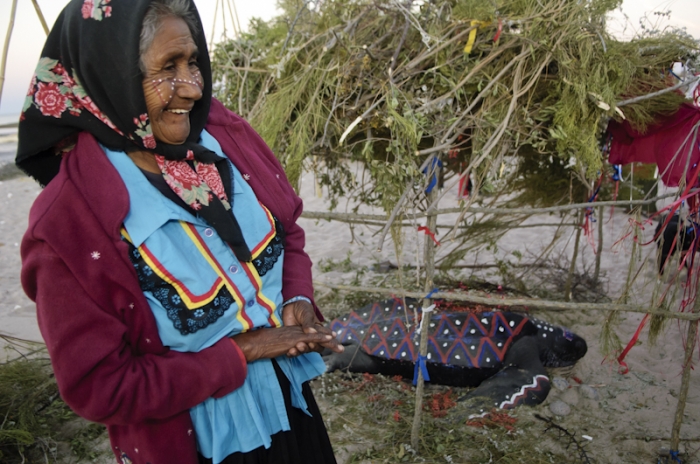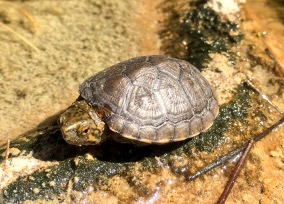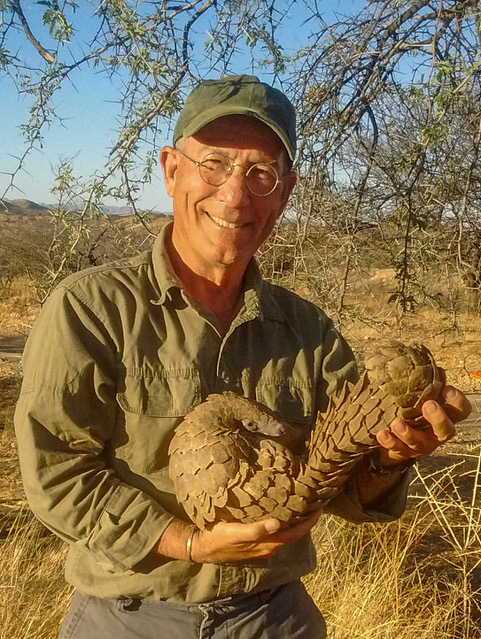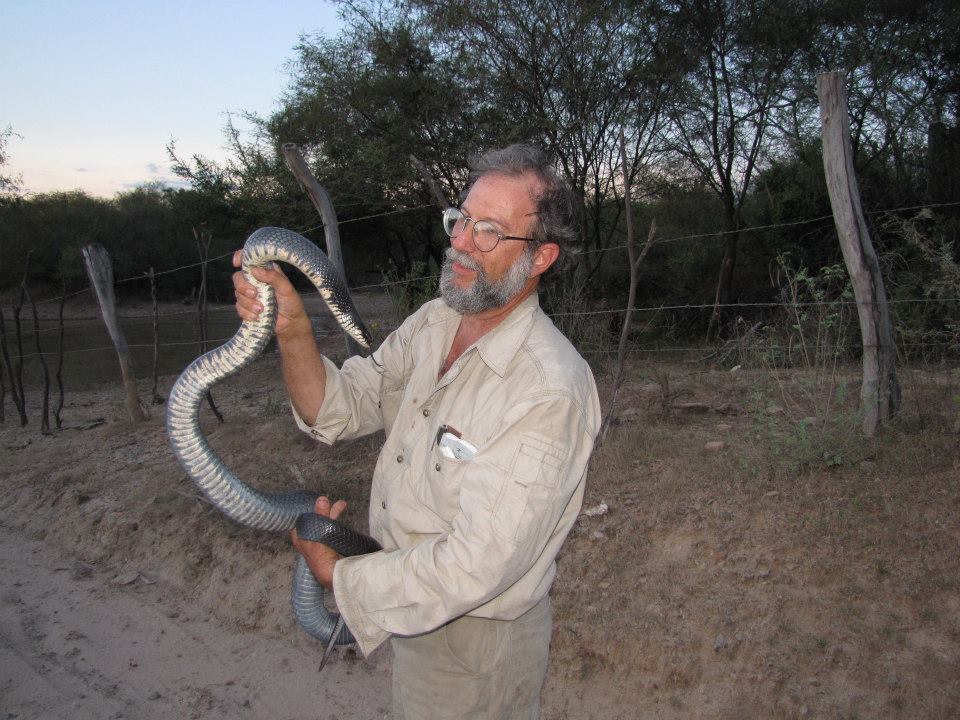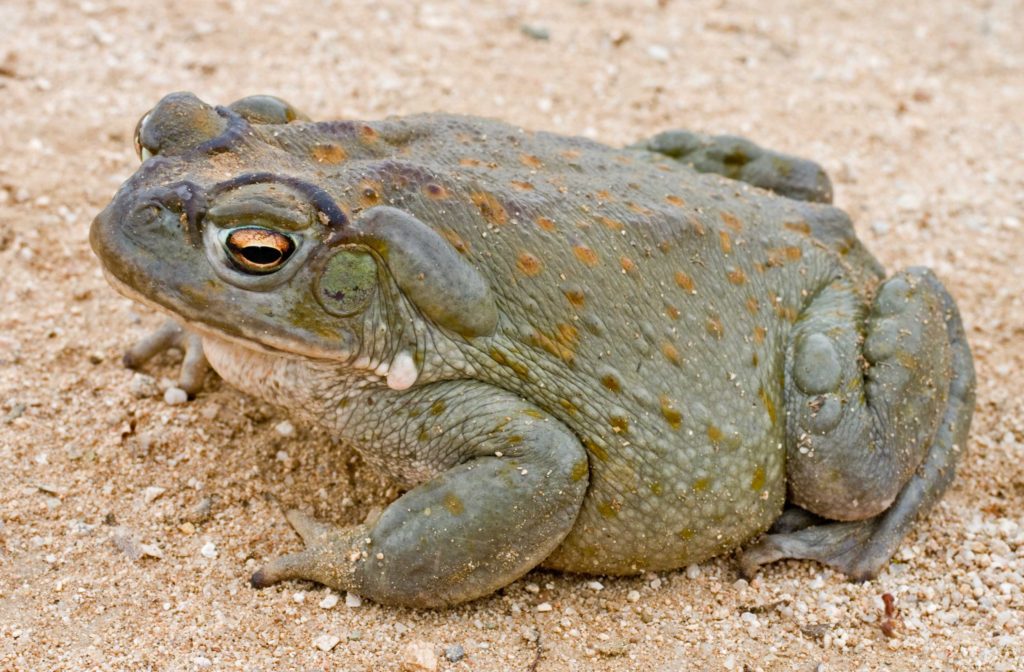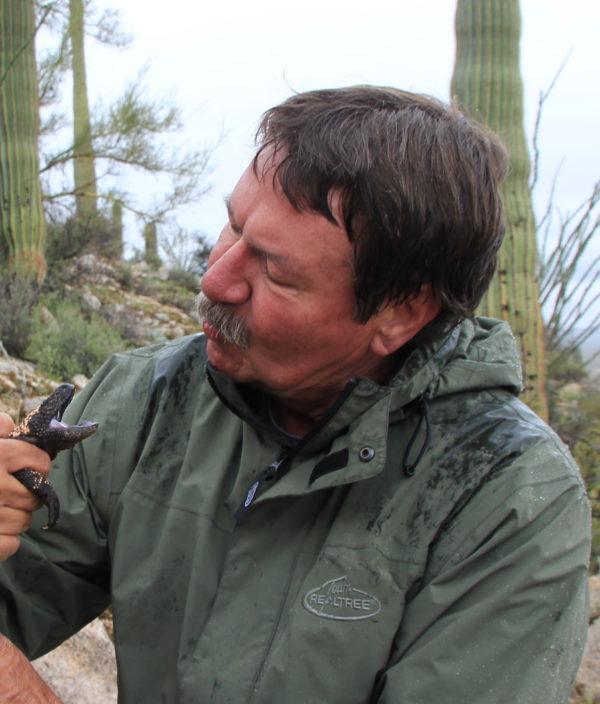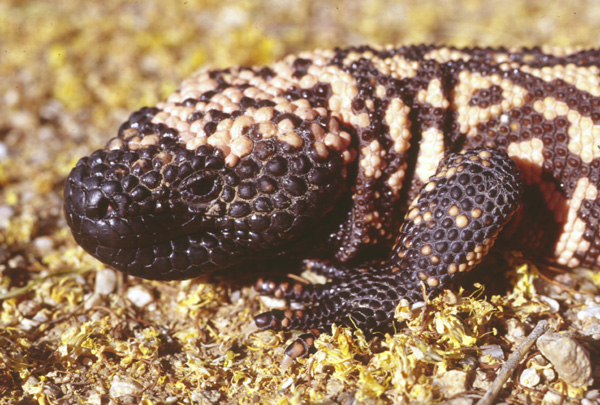~ The Endangered Mud Turtle That Survives in the Driest River of México ~
– Miguel Ángel Grageda García | Michael Bogan –
School of Natural Resources and the Environment | The University of Arizona
View presentation here:
https://www.youtube.com/watch?v=7dhc2THZC4g&t=6s
The Sonoyta mud turtle (Kinosternon sonoriense longifemorale) is an endangered subspecies that inhabits in a small portion of the Río Sonoyta basin in Sonora, México and Arizona, USA. Groundwater overuse has affected the Sonoyta regional aquifer and reduced flow in the Río Sonoyta and Quitobaquito springs, which has resulted in decreased habitat available for the Sonoyta mud turtle and two native species of fish. In 2003, there were seven locations with populations of Sonoyta mud turtle, but now there are only four in México and one more in the United States (Quitobaquito).
In this project, we are studying the population and trophic ecology of the Sonoyta mud turtle at some of these remaining populations. We have conducted preliminary genetic analyses to help guide population management efforts and diet analyses to better understand what might be limiting populations. We are also using mark-recapture and telemetry techniques to estimate population sizes and study potential connectivity among sites. Finally, we are assessing the potential a new reach of the river, supported by secondary treated wastewater, to provide new habitat for Sonoyta mud turtles.
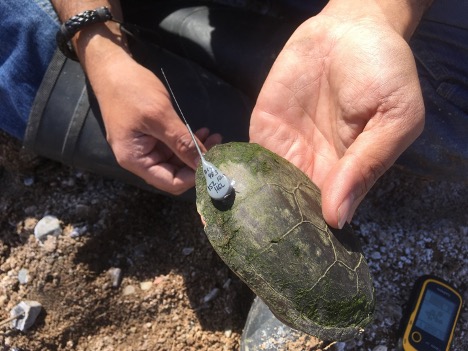
These turtles are adapted to inhabit in degraded wetlands and tolerate water deprivation for extended periods of time, but the habitat available in the Río Sonoyta basin may continue to be reduced to the point that it could be difficult to maintain healthy populations.
Miguel Grageda is currently a graduate student pursuing a Doctorate in Natural Resources at the University of Arizona studying the impact of human development on the population of two endangered species that inhabit in different habitats but share the same area in the Pinacate Biosphere Reserve, Sonora, Mexico. These two species are the Sonoyta Mud Turtle and the Sonoran Pronghorn.
Miguel was born in Mexico City and lived most part of his early years in the state of San Luis Potosi, in central Mexico. He obtained a Master’s Degree in Wildlife Management at Sul Ross State University in Texas and a Degree in Animal Science at the Universidad Autonoma Agraria Antonio Narro in Coahuila, Mexico.
Miguel worked since 2015 at the Pinacate Biosphere Reserve in Sonora as Coordinator of the Natural Resources Management Area, and also, he worked for several years as part of the NGO Protección de la Fauna Mexicana in efforts to protect threatened species and developing management studies for Protected Areas in the Chihuahuan Desert and the Sierra Madre Oriental.
He has been involved in projects with the Rocky Mountain Bird Observatory, Grupo de Ecologia y Conservacion de Islas (GECI), and Comision Nacional de Areas Naturales Protegidas (CONANP).
Miguel is also a passionate conservation photographer, that spends part of his time documenting the rich diversity of the ecosystems in northern Mexico and the situations that affect their integrity.
Michael Bogan is freshwater ecologist and an assistant professor in the School of Natural Resources and the Environment at the University of Arizona. He studies the impact of natural disturbances (e.g. droughts, floods) and anthropogenic water use on aquatic species and biodiversity in streams and springs across the southwestern USA and northwestern Mexico. Michael has been working in the region as an ecologist since 2000. He earned his Master’s and doctoral degrees at Oregon State University, and worked as a postdoctoral researcher at University of California Berkeley, before starting his current position at the University of Arizona in early 2016.
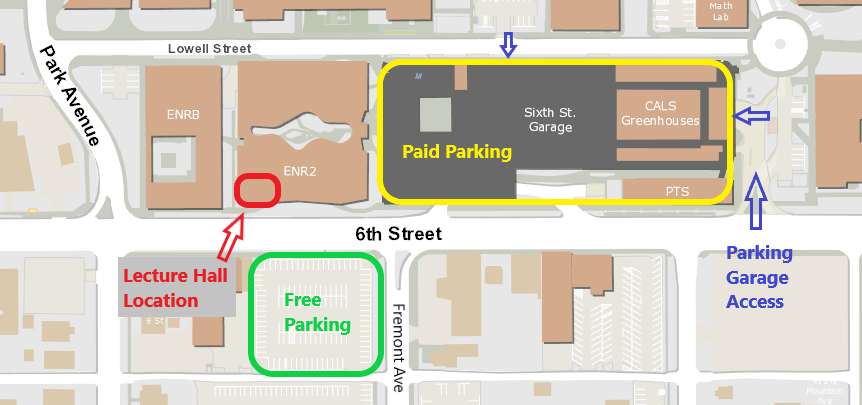


 Dr. Boyer received her medical doctorate from Harvard before completing a residency in Pediatrics and a fellowship in Medical Toxicology at the University of Arizona. She served as Medical Director of the Arizona Poison and Drug Information Center from 1994 to 2010 and was the founding Director of the Venom Immunochemistry, Pharmacology, and Emergency Response (VIPER) Institute in the College of Medicine at the University of Arizona.
Dr. Boyer received her medical doctorate from Harvard before completing a residency in Pediatrics and a fellowship in Medical Toxicology at the University of Arizona. She served as Medical Director of the Arizona Poison and Drug Information Center from 1994 to 2010 and was the founding Director of the Venom Immunochemistry, Pharmacology, and Emergency Response (VIPER) Institute in the College of Medicine at the University of Arizona.

 Sullivan first searched for amphibians and reptiles in Arizona in 1970; he returned every year thereafter, and arrived for good in 1979. He was hired as an Assistant Professor of Zoology at ASU in 1989, promoted to Full Professor of Herpetology in 2002, and served as the Editor of the Journal of Herpetology from 2000 through 2005. With students, colleagues, and his family, he has examined the behavioral ecology and conservation biology of amphibians and reptiles of the Southwest for over fifty years. Sullivan has authored roughly 200 articles, book reviews, technical reports, and book chapters, including many coauthored with students and colleagues in the Phoenix area.
Sullivan first searched for amphibians and reptiles in Arizona in 1970; he returned every year thereafter, and arrived for good in 1979. He was hired as an Assistant Professor of Zoology at ASU in 1989, promoted to Full Professor of Herpetology in 2002, and served as the Editor of the Journal of Herpetology from 2000 through 2005. With students, colleagues, and his family, he has examined the behavioral ecology and conservation biology of amphibians and reptiles of the Southwest for over fifty years. Sullivan has authored roughly 200 articles, book reviews, technical reports, and book chapters, including many coauthored with students and colleagues in the Phoenix area.